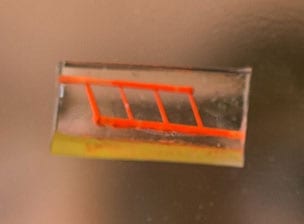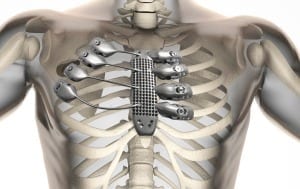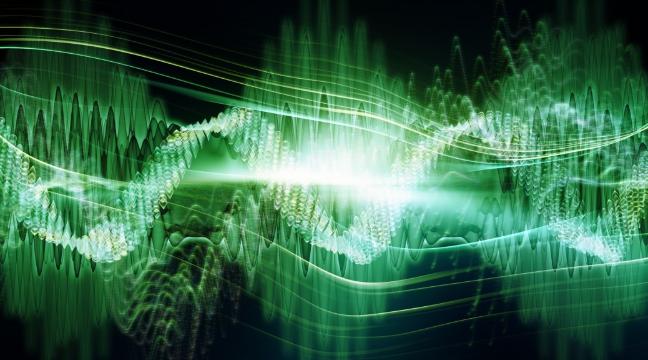
Using sugar, silicone and a 3-D printer, a team of bioengineers at Rice University and surgeons at the University of Pennsylvania have created an implant with an intricate network of blood vessels that points toward a future of growing replacement tissues and organs for transplantation.
The study showed that blood flowed normally through test constructs that were surgically connected to native blood vessels.
Tissue engineers have typically relied on the body’s own ability to grow blood vessels – for example, by implanting engineered tissue scaffolds inside the body and waiting for blood vessels from nearby tissues to spread to the engineered constructs.
“We wondered if there were a way to implant a 3-D printed construct where we could connect host arteries directly to the construct and get perfusion immediately. In this study, we are taking the first step toward applying an analogy from transplant surgery to 3-D printed constructs we make in the lab.” Miller and his team thought long-term about what the needs would be for transplantation of large tissues made in the laboratory.
Rather than printing a whole construct directly, the researchers fabricated sacrificial templates for the vessels that would be inside the construct.
Using an open-source 3-D printer that lays down individual filaments of sugar glass one layer at a time, the researchers printed a lattice of would-be blood vessels.
“We created a construct that has one inlet and one outlet, which are about 1 millimeter in diameter, and these main vessels branch into multiple smaller vessels, which are about 600 to 800 microns.” Collaborating surgeons at Penn in Atluri’s group connected the inlet and outlet of the engineered gel to a major artery in a small animal model.
Read more: Researchers create transplantation model for 3-D printed constructs
The Latest on: 3-D printed constructs
[google_news title=”” keyword=”3-D printed constructs” num_posts=”10″ blurb_length=”0″ show_thumb=”left”]
via Google News
The Latest on: 3-D printed constructs
- See inside a $130,000, 3D printed home in Portugalon May 7, 2024 at 2:00 am
Portugal-based startup Havelar says it can build a new home in two months. The walls of its new two-bed home were printed in 18 hours.
- 3D Printing's Impact on Middle Eastern Skylineson May 5, 2024 at 3:04 am
Since its inception in the early 1980s, 3D printing has evolved from a niche technology used primarily in research settings to a disruptive force reshaping the real estate industry. This ...
- 3D Printing Finds a Homeon May 2, 2024 at 8:49 am
“Prefabricated 3D printed homes reduce the amount of labor required to build a home, thereby making homes safer, potentially cheaper, and much faster from design to completion,” says Buff López, an ...
- Combatting Homelessness and Climate Change Through 3D-Printed Homeson May 1, 2024 at 11:29 am
The building and construction sector is the biggest culprit in the climate crisis. The construction industry uses over 3 billion tons of raw materials, ...
- Marriage of synthetic biology and 3D printing produces programmable living materialson May 1, 2024 at 6:42 am
Scientists are harnessing cells to make new types of materials that can grow, repair themselves and even respond to their environment. These solid "engineered living materials" are made by embedding ...
- Crafting Programmable Living Materials With Synthetic Biology & 3D Printingon May 1, 2024 at 4:59 am
New study uses 3D printing and genetically modified plant cells to create complex, self-repairing materials that could revolutionize biomanufacturing and construction. Scientists are harnessing cells ...
- Makers of the world’s largest 3D printer just beat their own recordon April 26, 2024 at 10:43 am
After a five-year reign, the world’s largest 3D printer located at the University of Maine has been usurped—by a newer, larger 3D printer developed at the same school.
- The world’s largest 3D printer is at a university in Maine. It just unveiled an even bigger oneon April 26, 2024 at 8:33 am
The university that boasts the world’s largest 3D printer developed one even bigger. A printer unveiled Tuesday at the University of Maine is four times larger than the current one and is capable of ...
- Blackwell 3D Construction takes over Blackwell Realtechon April 26, 2024 at 6:39 am
Blackwell 3D Construction, a 3D house printing technology company, has gained sole ownership of Dubai-based Blackwell Realtech 3D Printing Construction.
- World's Largest 3D Printer Constructs Homes—A Larger One Was Just Unveiled in Maineon April 24, 2024 at 2:10 am
The University of Maine (UMaine) recently unveiled a new 3D printer, known as the Factory of the Future 1.0 (FoF 1.0), at the Advanced Structures and Composites Center (ASCC).
via Bing News










